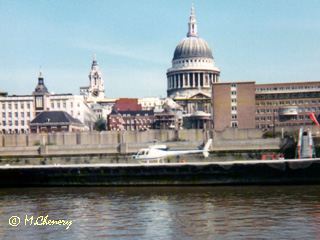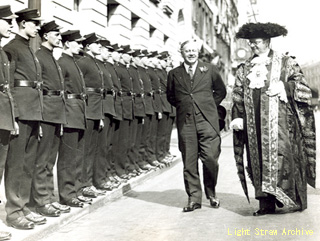...connecting the world
 |
The first I.S.D. (International Subscriber Dialling) call was made by the Lord Mayor of London (Sir Ralph Perring) at 11am on 8th March 1963. Calling from Fleet Building, he dialled 13 digits and was connected to Monsieur Jacques Marette, the French Minister of Posts, Telegraphs and Telephones, in Paris. |
Continental telephone services began in 1891 with the laying of a submarine cable between England and France making possible communications from London to Paris. This was controlled from GPO West, the Central Telegraph Office, until the transfer to GPO South, Faraday Building (North Block) in 1904. Cables to many other countries followed.
International telephone services were established by the opening of a radio link between London and New York on 7th January 1927.
All calls in those early days were manually connected and growth in traffic centred on Faraday International Telephone Exchange.
Overview
Circa 1930, international calls were connected via the manual switchboard with all the associated equipment in the same building, called an International Switching Centre (ISC).
As technology developed, calls were controlled by the operator dialling over semi-automatic routes, with the switchboard remote from the switching equipment. Thus the operators worked in an International Control Centre (ICC), some distance from the ISC.
Exceptionally, it was sometimes convenient to house the ICCs and ISCs in the same building. The more general term of International Telephone Services Centre (ITSC) was used to reflect this, but even then, the name ISC was commonly used to mean both.
As signalling and switching equipment evolved, subscribers could dial their own international calls via the automatic equipment in the ISC and this service was named International Subscriber Dialling (ISD). From (about) 1978 this was changed to International Direct Dialling (IDD) to reflect the fact that you didn't have to go via an operator. Also, by this time the term 'customer' was used to refer to 'subscribers'.
By 1985 there were only 6 ICCs remaining in the capital as more calls could be dialled directly. By the early 1990s, all of these centres had closed as operator traffic was handled outside of London.
The History & Growth of ISD
The growth in International Subscriber Dialling (ISD) relied heavily upon:
- Supplies of suitable switching equipment.
- Compatible signalling equipment.
- Accommodation to house both staff & equipment.
The Register-Translators of the Director Areas were particularly suitable for sending long digit trains of pulses (e.g. up to 15 numbers) and thus ISD facilities were first introduced in London.
| Faraday Building | |
| International traffic was originally centred on the Faraday Building and spread to a number of nearby, suitable locations as the demand for ISD increased rapidly over the years. | |
 |
"The opening of Faraday Building marks an important stage in British Post Office development and is a considerable event in telephone history. My Lord Mayor, I think I can say, that we are indeed, living in an age of miracles. Today by lifting the receiver of a telephone in London, a British subscriber can speak to Canada, the United States, South America, Australia, South Africa and nearly every other country, except China and Japan." |
| Fleet Building | |
 |
The first I.S.D. (International Subscriber Dialling) call was made by the Lord Mayor of London (Sir Ralph Perring) at 11am on 8th March 1963. Calling from Fleet Building, he dialled 13 digits and was connected to Monsieur Jacques Marette, the French Minister of Posts, Telegraphs and Telephones, in Paris. |
From 1964, Wren House connected inter-continental calls from four switchrooms located on the first and second floors of a former carpet warehouse.
As growth continued, Stag Lane was brought onto line as a stop-gap measure while Mondial House was still being built.
During the 1980s Caroone House was the administrative centre for International Telephones, as the division was known.
Goonhilly Downs once provided satellite and submarine cable links with the rest of the world.
Postscript
Time and technology moves on and what were once showcase buildings have quickly become outdated, outmoded and no longer suited to the needs of modern switching, either in terms of location, or type of structure. All of the International Switching Centres mentioned above are no longer in use and the sites have long been sold off and developed for alternative uses, such as shops, offices and hotels. Telecommunications buildings have always followed this path, such that new, innovative designs have evolved to meet the changing needs of supplying a universal service. Sadly the designs are by necessity no longer on a 'grand scale', so in these pages we celebrate what were once icons of their age.
All logos and trade marks are the property of their respective owners and are used on the Light Straw site(s) for review only. Students and researchers are recommended to make their own independent enquiries as to the accuracy of the information contained therein.